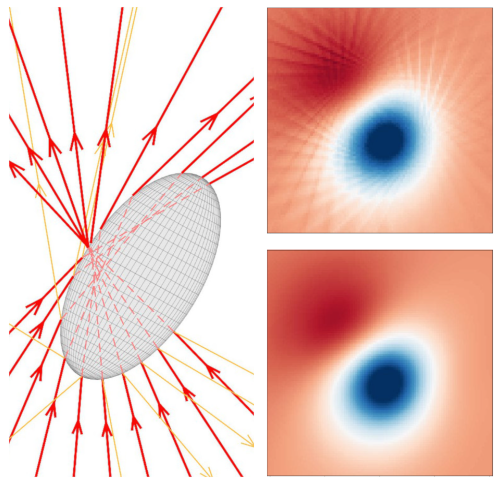
David Bronte Ciriza, Alessandro Magazzù, Agnese Callegari, Gunther Barbosa, Antonio A. R. Neves, Maria Antonia Iatì, Giovanni Volpe, and Onofrio M. Maragò
SPIE-ETAI, San Diego, CA, USA, 20 – 24 August 2023
Date: 22 August 2023
Optical tweezers are an established and versatile tool for the optical trapping and manipulation of microscopic object using light. Modelling the interaction between particles and light, i.e., being able to calculate the optical force and torque the light exerts on the particle, is important to both understand the outcome of experiments and help designing the experimental setup to the obtain a certain outcome. Different modelling approximation and relative calculation techniques are employed depending on the size of the particle and the features of the trapping light. In this work, we will focus on the geometrical optics regime, which hold for particles whose size is significantly larger than the wavelength of the light. In this approximation, optical forces and torques are calculated by discretizing the trapping light beam into a set of rays. Each ray, impinging on the particle, is reflected and refracted multiple times and, in this scattering process, transfers momentum and angular momentum to the particle. However, the choice of the discretization, i.e., which and how many rays we use to represent a beam, sets a trade-off between calculation speed and accuracy. Here, we show that using neural networks allows overcoming this limitation, obtaining not only faster but also more accurate simulations. We demonstrate this using an optically trapped spherical particle for which we obtain an analytical solution to use as ground truth. Then, we exploit our neural networks method to study the dynamics of ellipsoidal particles in a double trap, a system that would be computationally impossible otherwise.
Reference
David Bronte Ciriza, Alessandro Magazzù, Agnese Callegari, Gunther Barbosa, Antonio A. R. Neves, Maria A. Iatì, Giovanni Volpe, Onofrio M. Maragò, Faster and more accurate geometrical-optics optical force calculation using neural networks, ACS Photonics 10, 234–241 (2023)